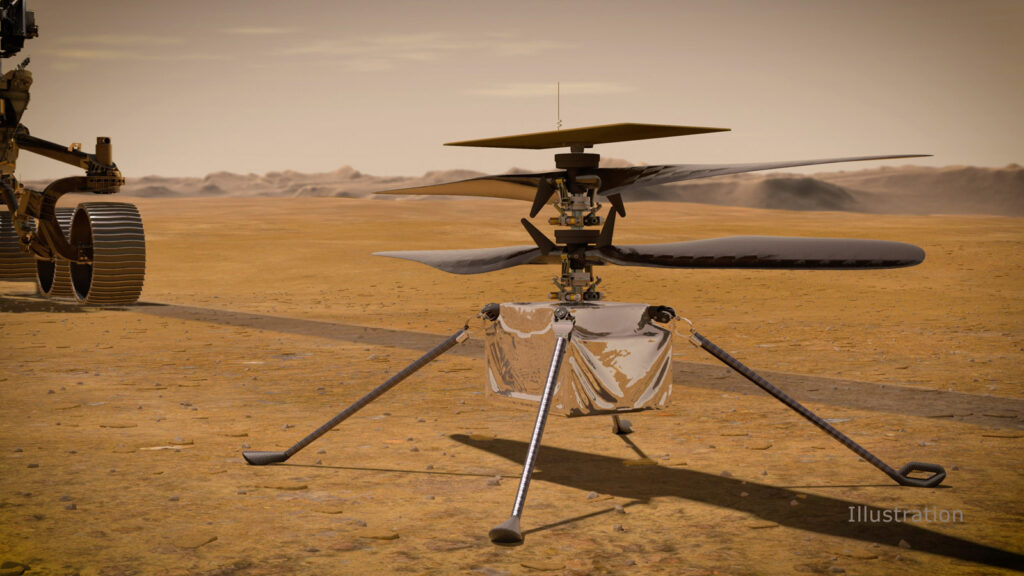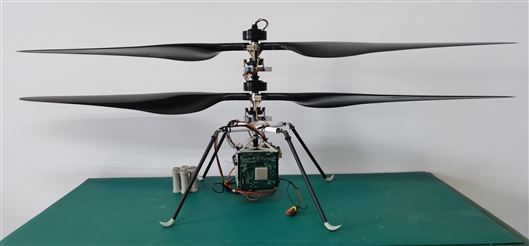Is China developing its own version of Ingenuity?
China’s National Space Sciences Center (NSSC) under the Chinese Academy of Sciences revealed in September that on August 20, 3 preliminary projects passed an acceptance test review, among which was one that could be roughly translated into “Mars surface patroller & remote sensing key technology study” (火星地表巡飞光谱探测关键技术研究). This latter project, led by Pr. Bian Chunjiang of the NSSC’s Key Laboratory of Electronics and Information Technology for Space Systems (中国科学院复杂航天系统电子信息技术重点实验室), included a Mars UAV prototype as well as its remote sensing payload. The project began in March 2019, 3 years after China had officially announced it’s Tianwen-1 Mars project, as revealed by Bian in a separate interview. At the time, Bian Chunjiang had applied for a Beijing Municipal Science & Technology grant for his research, which he obtained in December of the same year.

Technical Features
One of the most interesting things to note is that the UAV seems to have gone for a similar lift generating mechanism as NASA’s Ingenuity, namely 2 contra-rotating rotors. This technical solution is especially fitting for Mars due to its very thin atmosphere, meaning that rotors have to be larger for a given rotation speed to generate the same amount of lift (an obvious disadvantage in space exploration where size and weight are key). This is where contra-rotating rotors are remarkable as they have the advantage of producing higher lift for a given rotor diameter, and this also enables more compact designs. Many industrial drones today already use this technology, such as the French ECA IT180-120.
China’s prototype will have rotors of a diameter of 1.4m, slightly longer than the 1.2m of NASA’s Ingenuity. The total weight of the drone is 2.1 kg, which is also slightly heavier than Ingenuity, at 1.8 kg. Perhaps the most remarkable difference between Ingenuity and the Chinese UAV is that the latter charges its batteries by connecting itself to a rover on the ground, while the former relies on solar panels.

Different Objectives
According to Bian, the objective behind the development of a Mars UAV prototype is to acquire data on large surfaces of Mars: areas with several hundred meters of radius in one flight. This is a clear advantage over a rover, which can also achieve such a distance but over a much longer period of time. The Mars drone would also be instrumental in understanding the environment around the rover, detecting features of interest from above, and guiding the rover to the given target.
This is perhaps where there is some contrast between China’s future Mars UAV, which carries some spectral imaging payload, and NASA’s Ingenuity, which has some navigation cameras but is really more of a demonstrator mission with no scientific payload (this being because the whole design of Ingenuity was focused on demonstrating the feasibility of flying on Mars).
Overall, it’s fascinating to see a new UAV prototype for space exploration, coming this time from China. It’s worth noting that the Chinese project is still very early stage: Bian Chunjiang admits that a lot of work remains to be done, hinting at “5-6 years of research”, as well as the necessity to test the drone in a simulated Mars environment (which is experimental infrastructure that China does not have at the moment).
China is reported to plan a second Mars mission in the late 2020s, including sample return. No precise information is known at this stage, but some presentations have hinted at the late 2028 Mars launch window.



